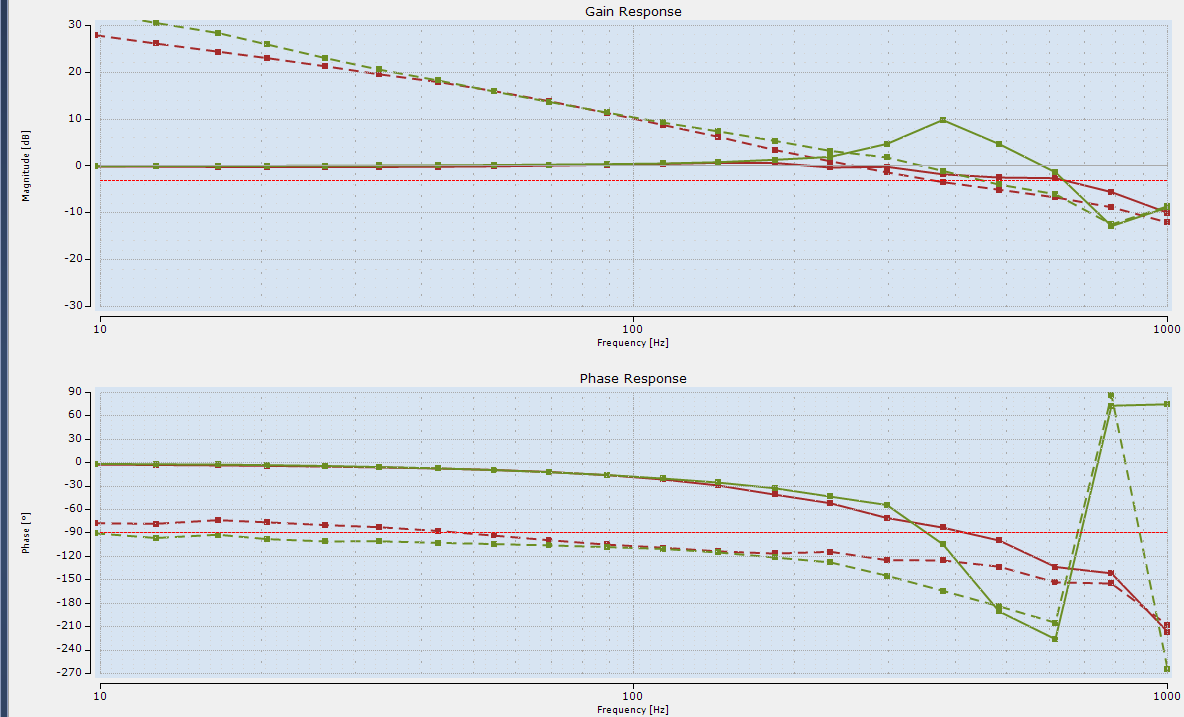Adjustment procedure
For most applications it is beneficial to use the Velocity Observer in basic mode. The bandwidth should be left at the default value of 500 Hz. The diagram below illustrates the effect of activating the Velocity Observer with the default settings in the oscilloscope:

The recording originates from a linear axis with ball screw. The green line shows the actual velocity in mm/s. The Observer was activated at the black vertical line.
The Bode diagram shows that system peaking at approx. 380 Hz disappears after activation of the Velocity Observer, since the open-loop phase shift is lower with activated Velocity Observer from approx. 100 Hz. The result is a larger phase margin:

The green line was recorded with the Observer switched off, the red line with the Observer switched on. The dashed line shows the open-loop phase shift.
If interfering resonances occur in the lower frequency range, it may be useful to reduce the bandwidth of the Velocity Observer. For axes with very rigid coupling between motor and load it may be useful to increase the bandwidth.
Advanced Mode
Advanced mode is recommended for axes with high narrow-band resonance frequencies, for which a notch filter is considered. The bandwidth of the Velocity Observer should be lower than the resonance frequency by a factor 2 ... 3.
Compared with the notch filter, the Velocity Observer benefits from a greater tolerance, even though the resonance frequencies can vary somewhat over time, or depending on the position.